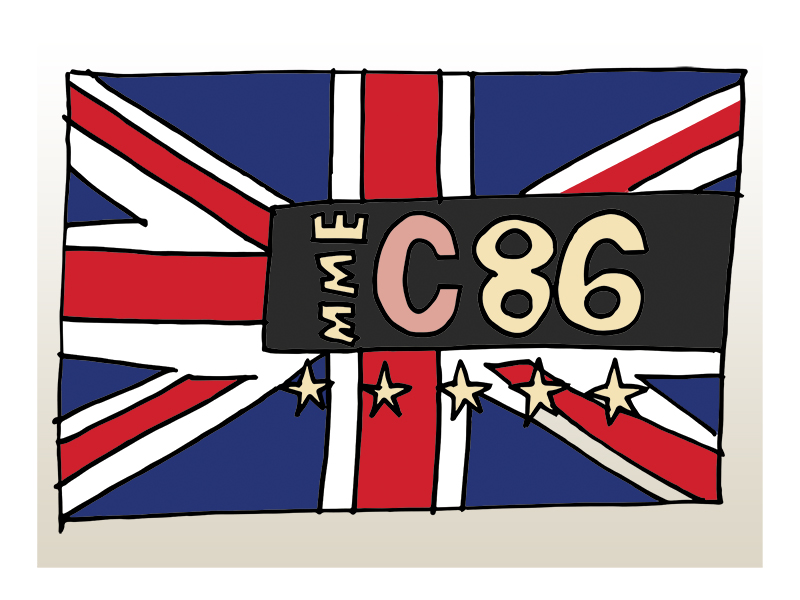The short-lived style blended sticky pop melodies with tender poetics
Lacking the cosmopolitan cool of the mod revivalists, the existential ennui of the post-punkers, and the glitter of the new romantics, the rise of the C86 movement in the 80s was sudden and bizarre. In a way, it seemed fitting considering the artists at the style’s core.
C86 was first coined by the British magazine NME in their eponymous 1986 cassette compilation, created with the purpose of unearthing new groups from Britain’s burgeoning indie pop scene. The term served not only as a descriptor for the jangly, overblown pop sound of the groups, but of the shambling and emotionally fickle mentality that existed behind them.
In essence, C86 was more of a movement than a singular musical style. Very much a regional affair, the groups hailed from smaller middle-class communities rather than the metropoles usually associated with the glitter of rock-and-roll stardom. The groups themselves mirrored their peculiar musical upbringing, as the movement was primarily perpetuated by tenderly lovesick middle-class kids with nothing else to do but pour their feelings into song.
Former NME writer Andrew Collins summed it up perfectly when he referred to the movement as “the most indie thing to have ever existed.” Characterized by its healthy use of jangly guitars and superfluous pop melodies draped in a thick blanket of sentimentality, the honesty which sifted through this formula is what gave C86 its charm. This allowed it to withstand time and remain ever-present within the scope of British indie-pop.
The Pastels, a Glaswegian group led by Stephen McRobbie, is the group that best personified the sentiment of C86. As delicate and soft-spoken as they were abrasive and disjointed, this duality was first presented in their 1982 debut seven inch vinyl record Songs for Children. The record would influence hordes of young Brits to pick up instruments and capture the same emotion. While far from their best work, the cultural impact of this seven inch proved immense, becoming somewhat of a cornerstone for the C86 movement to come.
This trend would live on through groups such as the Edinburgh-based band Shop Assistants, whose nervy, black leather pop shined brightest in their charmingly bitter ode to an ex-lover, “I Don’t Want to be Friends With You,” and The Flatmates, a Bristol-based group who broke out at the same time with their dreamy pop anthem, “I Could be in Heaven.” Largely rooted in punk, the bubblegum coated melodies, lo-fi scuzz and 60s girl group influence allowed these groups to deviate from the norm. This approach created an original and contemporary sound which reflected not just the music scene, but the era itself.
Expanding even further into sonic territories were Paisley-natives Close Lobsters. Their debut single, “Going to Heaven to See if it Rains,” released by Fire Records, incorporated a tinge of psychedelia. This influence proved rare in the context of C86, as it drew more from the subtle ethereal tones of contemporary British groups than the acid-soaked psychedelia of the 60s. Still, this dash of dream pop injected the Scottish quintet with a fuller sound and made them one of the most endearing and influential groups of the movement. Their 1987 debut album, Foxheads Stalk This Land, a record chock-full of twee anthems, drew from The Byrds as much as they did from Cocteau Twins. This balance of differing sounds perfectly encapsulates C86, as it stands as one of the few classic LP’s from the movement.
Despite its naive facade, to dismiss the C86 style would be a crime. Many groups, such as the groovily soft-spoken Mighty Mighty and the aforementioned Close Lobsters, integrated outspoken political messages in their music. However, the group that best translated its politics to music was undoubtedly the London-based McCarthy. Sporting an especially shambolic sound, the group incorporated strong left-wing politics in their music. This political slant would consume nearly every one of the McCarthy’s singles released in the five years they were together and cemented the band’s legacy in C86 lore.
The vast influence C86 had on future generations is hard to miss. The cataclysmic rise of Britpop acted as a follow-up of sorts to the movement. This was especially perpetuated by less polished groups like Elastica and Supergrass. The past few years have seen a rise in groups channeling the aesthetics of the heartbroken mid-80s pop kids. Bands such as Alvvays, Girlpool and The Pains of Being Pure at Heart play a crucial role in preserving the C86 style. These bands still incorporate contemporary influences, however, to craft their own sound. And yet, this is added proof that the spirit of C86 still lives on.
Graphic by Zeze Le Lin
